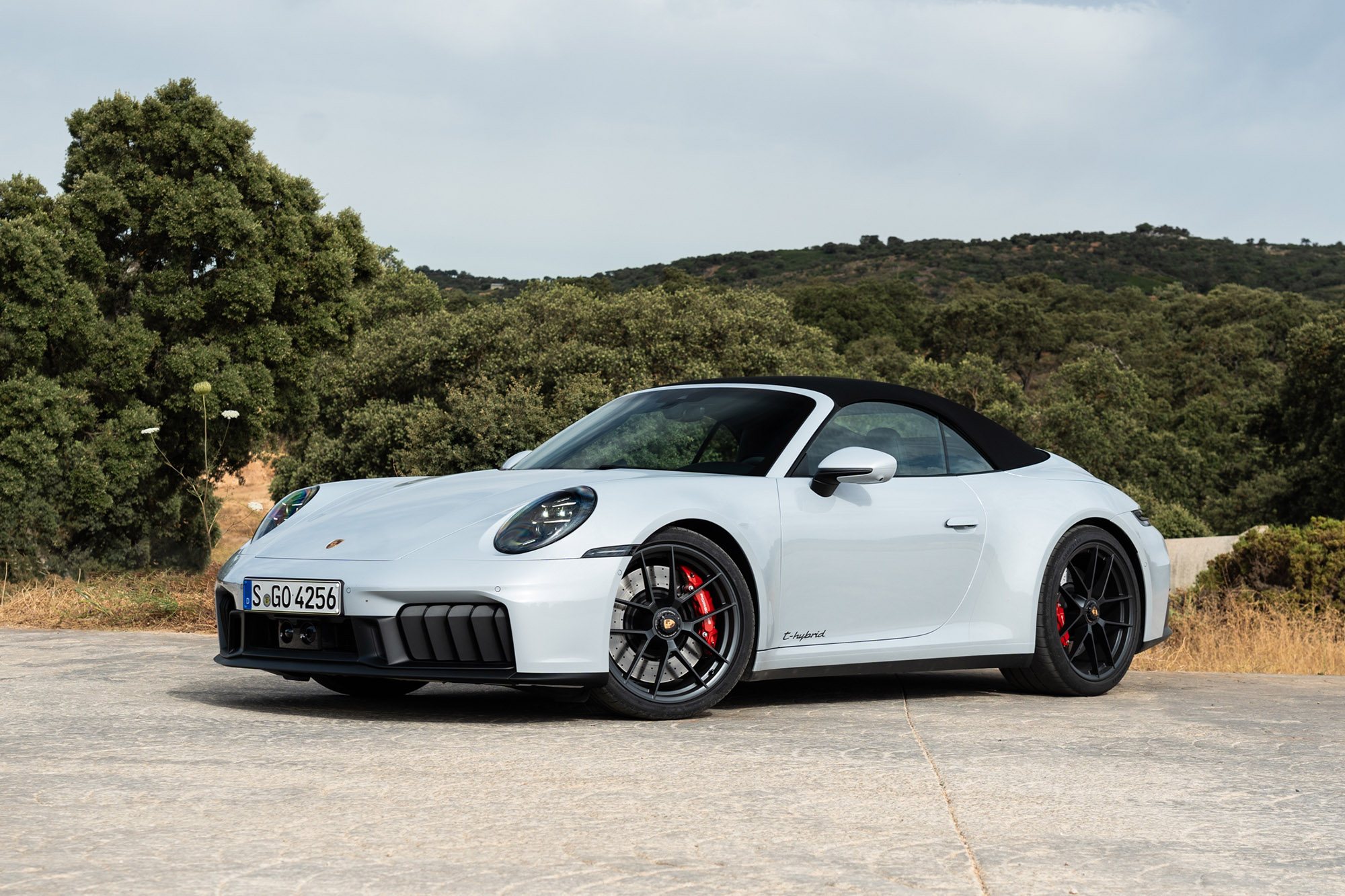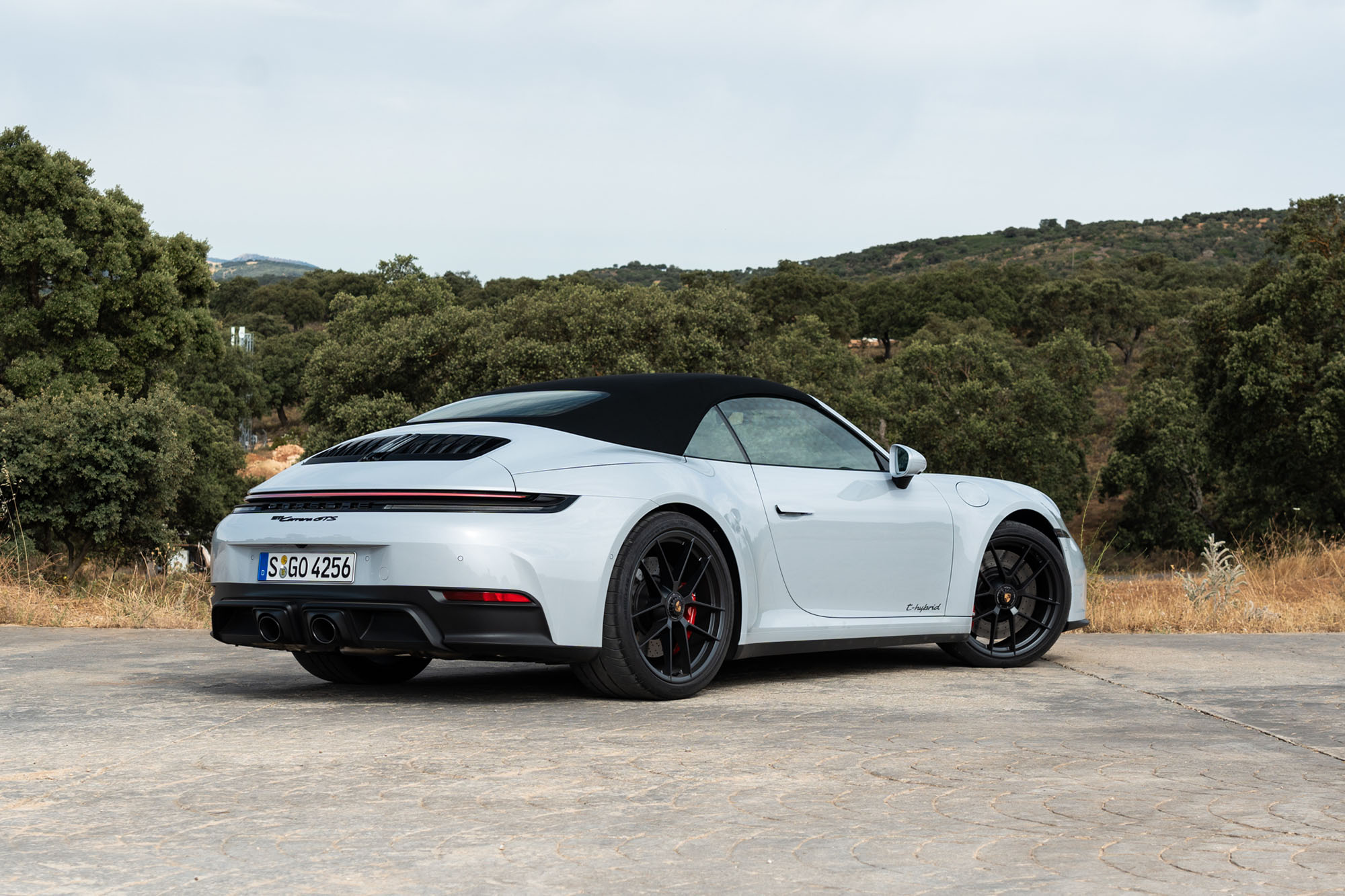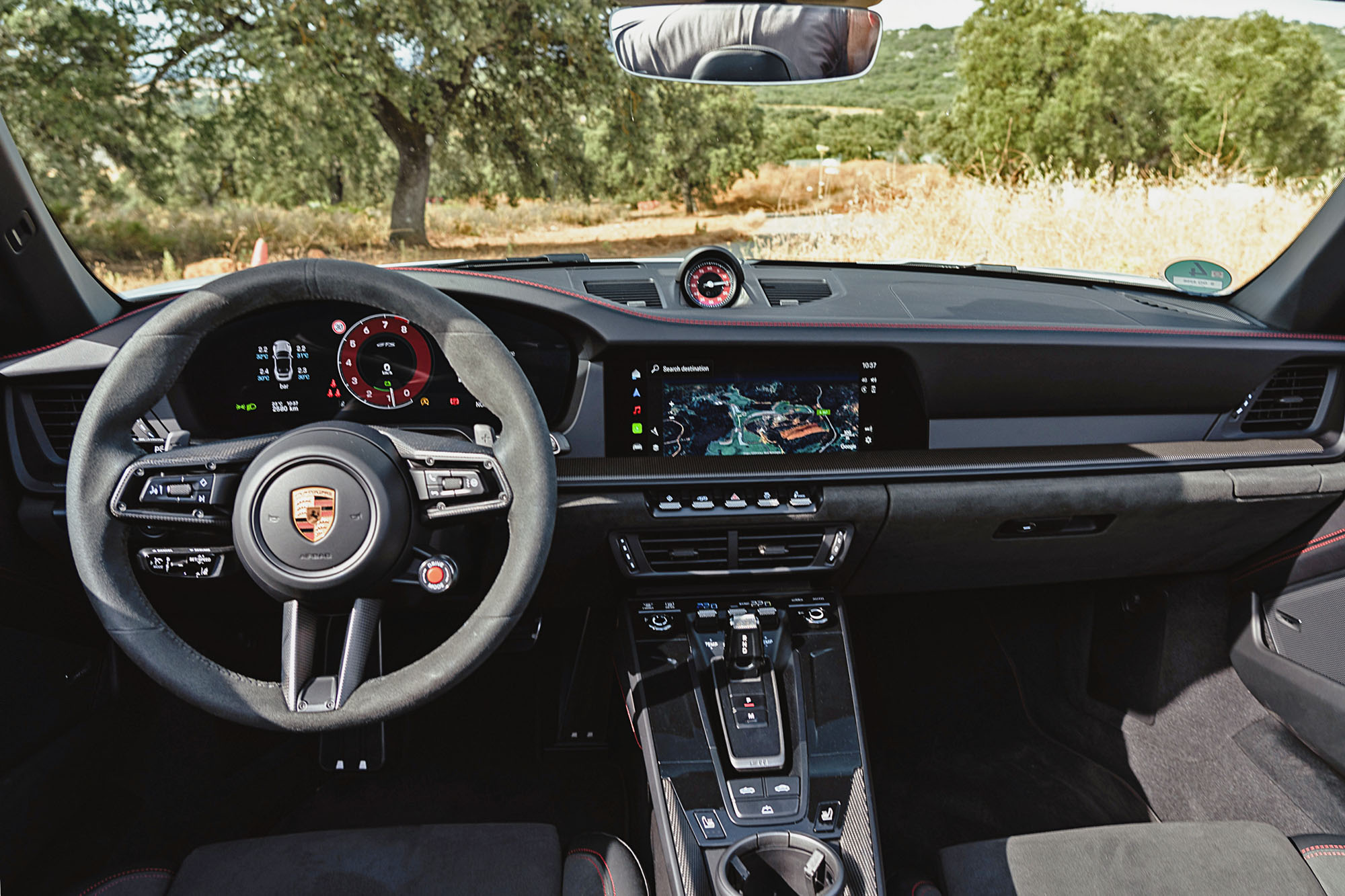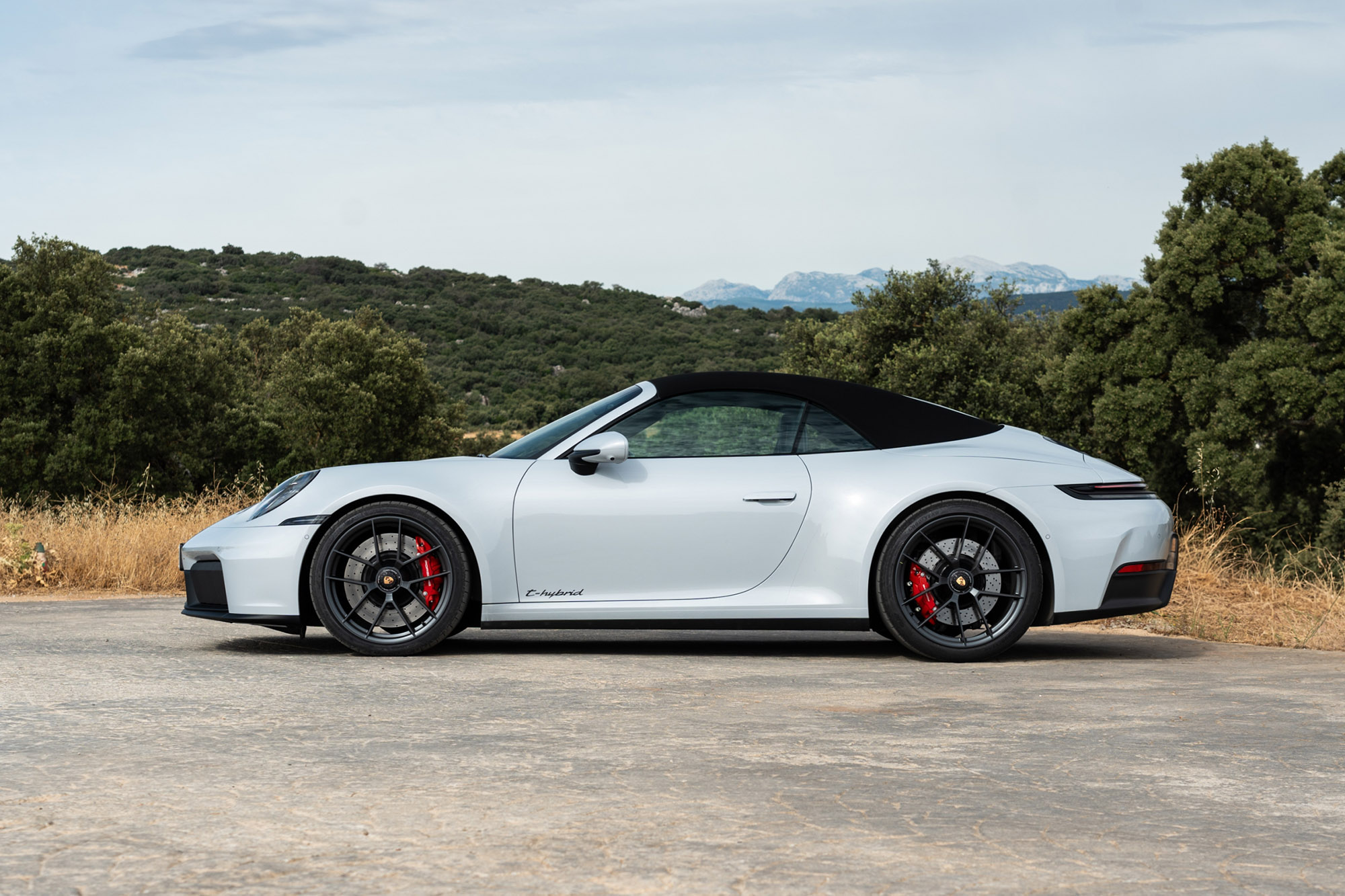2025 Porsche 911 Carrera GTS First Drive Review
Porsche's new hybrid sports car is the most tech-forward 911 yet, but it remains faithful to the nameplate's legacy.
 Tim Stevens
Tim Stevens
With the Toyota Prius turning 24 this year, it's understandable to think of gas-electric machines as rolling compromises intended to boost fuel economy and reduce emissions at the expense of fun and drivability. So getting excited about the prospect of a hybrid-powered Porsche 911 might be difficult.
There are outliers, though — hybrids with a soul — and that's the plan for Porsche's first 911 hybrid, the 2025 Carrera GTS. The company's engineers have gone to great lengths to ensure that adding a couple of electric motors and a battery to the iconic sports car does not ruin the 911's core character.
While the refreshed 2025 Porsche 911, known internally as the 992.2, can be had in a non-hybrid Carrera trim for a starting price of around $122,000, the hybrid-powered 2025 Porsche 911 Carrera GTS starts at about $167,000 for a base, rear-drive coupe. An all-wheel-drive Carrera 4 GTS begins at roughly $175,000, and you can spend $13,300 more for a droptop GTS Cabriolet or GTS Targa.
While the new Carrera GTS offers some visual changes, including five dramatically actuated flaps on the nose that open or close to balance cooling and aerodynamics, the real story is the hybrid drivetrain.
 Tim Stevens
Tim Stevens
A Flat-Six Serves as the Heart of the Porsche 911 Hybrid
In the new 2025 Porsche 911 GTS, you'll still find a gasoline engine in its 911-traditional place: a horizontally opposed 3.6-liter six-cylinder positioned behind the rear wheels. It's turbocharged like most other 911s these days, but the turbocharger on the GTS is the first significant change for 2025.
It's electrically assisted, taking advantage of the hybrid's high-voltage system to spin itself up quickly, ensuring you have peak power ready after hitting the accelerator. Interestingly, that turbocharger can also act as a generator, so when the turbo is generating excess power, some of it can recharge the battery.
That battery is relatively small by hybrid standards, at just 1.9 kilowatt-hours. It lives just behind the front wheels and powers a second, much larger electric-assist motor. This one's integrated into the Carrera GTS's eight-speed dual-clutch automatic transmission (DCT), and it makes the car a true hybrid, adding 53 additional horsepower for a total system output of 532 horsepower and 449 pound-feet of torque.
 Tim Stevens
Tim Stevens
In the Driver's Seat of the New 2025 Porsche 911 Carrera GTS
Hit the Start button in many hybrids, and nothing happens. You just sit there quietly before pulling away from your parking spot in complete silence. That's not so in the 911 Carrera GTS. Hit the Start button in this hybrid, and the gasoline flat-six engine fires right up. Sure, it might turn off again as soon as you get to a stoplight or come to a halt in traffic, but this isn't a standard-issue hybrid vehicle.
Instead, this is a machine with a radically advanced hybrid system designed for two things: more power and improved throttle response. And it delivers. My first hard acceleration run in the rear-drive Carrera GTS Cabriolet, a well-optioned model with a manufacturer's suggested retail price (MSRP) of $201,315, including the destination charge, resulted in a quick slide from the rear end as the driven tires lost grip.
That behavior was partly due to the grimy Spanish roads I was driving over. Still, it was an abrupt introduction to the brutally fast power delivery of the new 2025 Porsche 911 GTS. Many modern turbocharged cars, even performance-oriented ones, take their time before giving you full power when you dip into the throttle. Not this one.
 Tim Stevens
Tim Stevens
Stomp on the accelerator pedal, and the raspy sport exhaust hits full song quickly while the turbocharger whistles and whooshes. A digital boost gauge is buried within the infotainment system if you want to reference it, but you won't need it.
That abrupt power delivery is unique in the 911 lineup, making the GTS great fun when darting around traffic on narrow, twisty roads. It's even better on the track, where the 911's core handling traits prove intact. Despite the electric motors, battery, and all the requisite wiring, the hybrid GTS has only gained 103 pounds compared with its predecessor. That's remarkable.
While driving a 911 Carrera GTS Coupe, the extra power and now-standard rear-axle steering stood out on the track. The car instantly jumped out of tighter corners that might otherwise require a momentary wait for the boost to build. On the longer straights, the power just kept on building, and the electric assist provided a little extra shove to even out the already-smooth shifts from the DCT.
Regarding handling, the extra turning and stability provided by the rear-axle steering system and the wider tires' added grip produced an exhilarating driving experience.
 Tim Stevens
Tim Stevens
Major Changes but a Familiar Feeling
You need to settle into the interior to find the refreshed 911's other significant changes. A new, 12.6-inch curved digital instrument panel presents you with myriad, customizable views containing all the information you could ever want. Unfortunately, it lacks the analog tachometer needle that's survived in the 911 until now. Likewise, Porsche has finally replaced the twist key with a push-button ignition.
A 10.9-inch touchscreen lives in the center of the dashboard, featuring the Porsche Communication Management (PCM) infotainment system augmented with additional performance-oriented displays for the GTS. Still, it looks and behaves like the PCM in other recent Porsches: clean, snappy, and easy to use. Both Android Auto and Apple CarPlay connectivity are on offer.
The rest of the interior is familiar but simplified from previous generations of the 911. For example, the center console is relatively button free, meaning you'll reach for that touchscreen more often. But that also makes for a clean, minimalist cabin.
 Tim Stevens
Tim Stevens
Even at speed, the Cabriolet's interior remains surprisingly quiet and calm. With the fabric top raised, you'd hardly even know you're in a convertible, thanks to the rigid internal headliner. And while there is a weight penalty to pay for the convertible roof, handling differences between the Cabriolet and Coupe are minimal.
All 2025 Porsche 911s come with some new safety tech, too. Lane-keeping assist and automatic emergency braking with pedestrian detection are now standard, but you'll need to option the car with Porsche InnoDrive to get adaptive cruise control and lane-centering assist.
 Tim Stevens
Tim Stevens
Classic 911 Vibes, Just Louder
Thanks to its wholly new hybrid system and wild, tech-forward turbocharger, the new Carrera GTS is the most radical reboot of the 911 in quite some time. The two working in unison create an abruptly brutal power delivery but, crucially, don't change the feel of the car.
The Porsche 911 has always had a distinctive feel, a simple purity to the driving experience that's unmatched despite its ever-increasing size and weight, and that hasn't changed with the Carrera GTS. Unlike the Chevrolet Corvette E-Ray, which is loaded with luxury trimmings to create a lifestyle-oriented version of the car, or the upcoming Mercedes-AMG GT 63 E Performance, which has a battery more than three times larger and can be driven purely on electricity for short distances, the new GTS stays pure.
Despite its hybrid powertrain, the GTS remains faithful to the 911 legacy, which is a beautiful thing.
Porsche provided the vehicle for this 911 Carrera GTS review and paid for airfare, lodging, meals, and experiences during the evaluation period.
All vehicle pricing includes MSRP plus destination charges (set at the time of publication), and will be rounded to the nearest thousand.
Written by humans.
Edited by humans.
 Tim Stevens
Tim StevensTim Stevens is a veteran editor, analyst, and expert in the tech and automotive industries. He helmed a major website's automotive coverage for nine years and acted as its content chief. Prior to that, Tim served as the editorial lead at a tech-oriented site and even led a previous life as an enterprise software architect.
Related articles
View more related articles